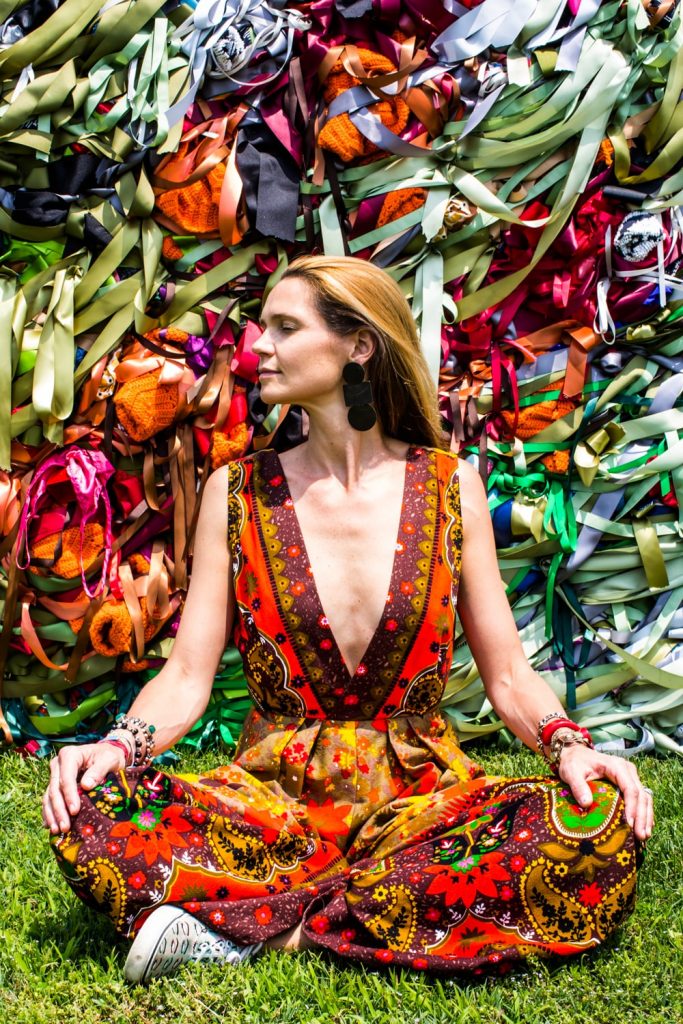
Vadis Turner is a Nashville-born painter and mixed-media artist. Her work has been featured in exhibits around the world, from The Brooklyn Museum of Art to the Egon Schiele Art Centrum in the Czech Republic to the Tennessee State Museum. Turner’s work re-examines and challenges gender roles, rites of passage, and the creative output of women throughout history. In 2014, Turner and her husband, Clay Ezell, moved back to Nashville from New York, where Turner had lived and worked for roughly a decade.
Turner’s latest exhibition, Tempest, is now showing at the Frist Center for Visual Arts. The pieces in Tempest are divided into three rooms and relate to three different chapters of a woman’s life: The Wild Woman, The Mother, and The Elder. Through these chapters, Turner compares the life of a woman to the life (and effects of) a raging storm, examines the value of heirlooms, and questions the expectations surrounding femininity and domesticity.
Fresh off of setting up the exhibition, Turner talked to us about her return to the South, her family, and the heirlooms that inspired Tempest.
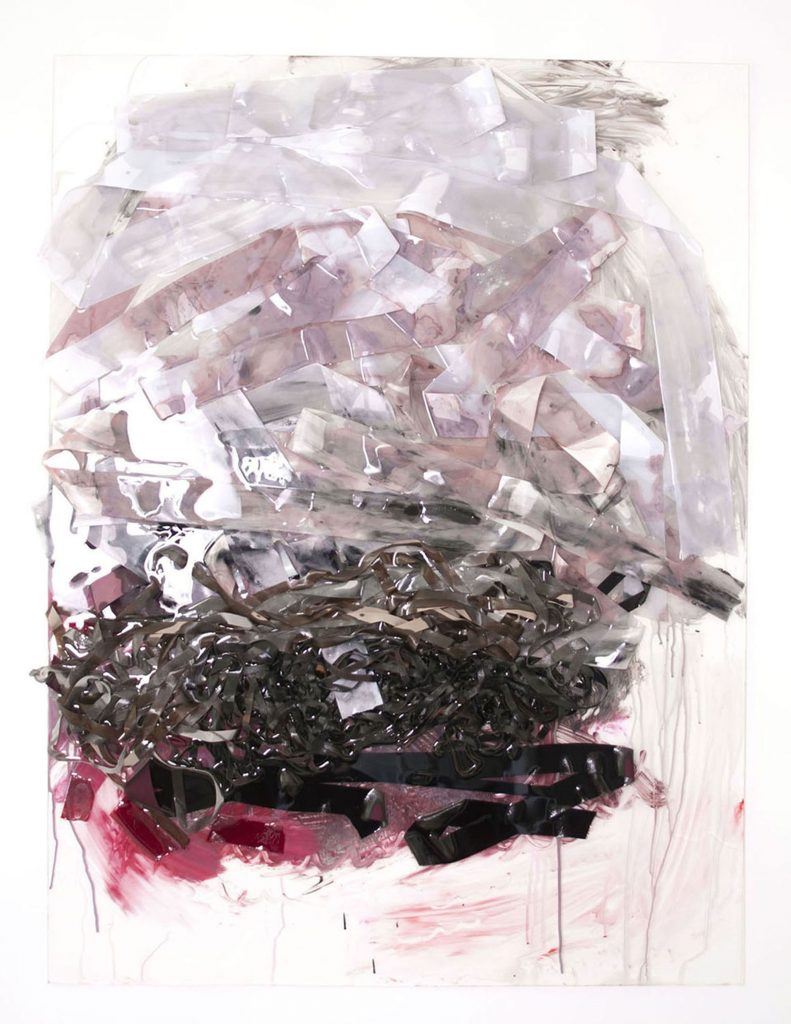
In a past interview, in reference to when you were a young adult, you said, “I wanted to take a major break from Southern culture at that time.” What made you come back in 2014, and how do you think things have changed here since your childhood?
I really had a wonderful childhood here. As a teenager in the ’90s, I measured Nashville by what we didn’t have. We didn’t have a Gap. We didn’t have a Starbucks. I wish that hadn’t been my matrix for “cool,” but it was the era of mall culture when American cities were seemingly trying to homogenize. I wanted to leave my comfort zone and study painting elsewhere.
After living in Brooklyn for fifteen years, I observed that Southern culture was making Brooklyn increasingly hip . . . so hip, in fact, that many of us were getting priced out. I really wanted a dishwasher and a second child too—in that order. Both seemed easier to make happen here.
Nashville has a pulse that I don’t recognize from growing up here. The city had started to take pride in and capitalize on what made it unique. I attribute some of its vibrancy to the many creatives who left New York and L.A. in search of greener pastures and standard-size dishwashers.
I went to Germantown the first time in 1995 to work as an assistant at Alan LeQuire’s studio. It looked like a ghost town, other than Homey’s and the original Monell’s, which only attracted locals, not tourists. Alan had just designed a gorgeous mosaic floor that I mortared wearing my high school volleyball kneepads. Now it’s the patio at City House restaurant, and people eat artisanal pizza on the floor I mortared. It has never gotten me a free drink, though I have tried.
One of the few things I miss about old Nashville was how few people went to the honky-tonks. Everyone had a seat! And you could have a dance with a cowboy for the sake of having a dance. They would walk you right back to your seat without trying to chat you up. Then again, maybe I wasn’t a good enough dancer.

Has the return to Southern culture informed the work in Tempest?
After college, I moved home briefly before moving to New York. I was still making art but wanted to take a break from painting. I remembered an inspiring professor, Peter Hoss, had always told me that my subject matter was right under my nose. I considered the roles Southern women play and the expectations that fall upon them. I started making work with rolls of wax paper and other kitchen supplies from my mother’s kitchen.
The world of mixed media opened up from there, but I always gravitated toward materials representative of women’s work and the domestic sphere. I continue to work with and develop this “palette” but have broadened the content to other female-centric narratives and rites of passage.
The second and third rooms of Tempest are comprised of work I created since moving home. The work in the Elder room is based on a series of interviews I had with over twenty female elders from greater Nashville. The influence of Southern women has come full circle in Tempest as it directly informed my very first, and latest, body of mixed media work.
Your work attempts to redefine the definition—and importance—of heirlooms by converting feminine objects into “agents for social commentary.” What do you think this generation’s heirlooms will be?
Our heirlooms are in plain sight but possibly invisible to us. I think it’s the job of the next generation to discover what we are making that is relevant to our time. But it’s not an heirloom if the next generation doesn’t appreciate or value it.
I think that younger generations are inventing new heirlooms by reclassifying things that their elders wouldn’t have deemed precious. One woman I met with brought her grandmother’s sewing box that she opened with me for the first time since her grandmother had passed away. It was a delicately organized time capsule. Another woman cherishes her grandmother’s recipe box more than the fine furnishings that came her way. I learned about a group of adult siblings who cheerfully fight over the cinnamon bear they used to shake over their toast every morning. I recognized a thread of repurposing commonly used items into sacred objects.
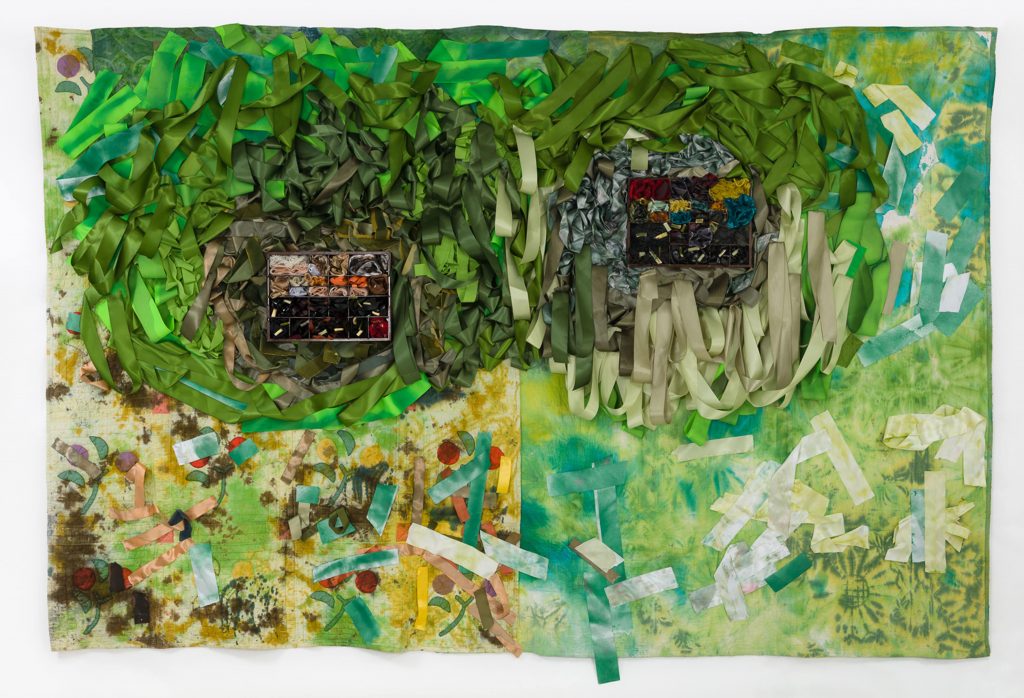
Are your tangible “heirlooms” in part a reaction to the way we digitally chronicle our lives through social media, which obviously isn’t tangible?
I used to think that our culture is defined by what we create, but now I think it’s more about how we spend our time.
Several seniors I met with discussed how pastimes like needlework, reading, and raising flowers are disappearing because people don’t have time anymore. We have the same number of hours in each day (possibly more), but we are working or entertaining ourselves on electronic boxes of different varieties. When I considered digital media to be one of my pastimes, I wanted to change tack. Especially because most of these time-sucks du jour become obsolete in a year or two.
Every single woman that contributes to the compositions in Tempest tends to the earth or contributes to their landscape in some way. From Ophelia, to Eve, to my mother, to Mary Sharp. My reaction to making this show is to rework my own pastimes and make more with my time.
Your textile paintings in the Elder room are grouped into four categories of heirlooms: object heirlooms, place heirlooms, ritual heirlooms, and spirit heirlooms. How did you arrive at these distinctions?
This is the most challenging body of work I have ever created. I have never used first-person interviews as my subject matter before. I was profoundly moved and completely overwhelmed by what was shared with me. I had to problem-solve how to best present what I learned in abstract works. I re-listened to the recordings and distilled their stories down to the most essential element, wisdom, or heirloom.
Their life experience and self-reflection enabled me to reimagine heirlooms beyond traditionally valuable objects. I grew to realize that an heirloom can be a public place (like Lake Michigan), pastimes (like flower arranging), a religion (that can move you around the world), or a storied object (created from the hat scraps of a milliner’s studio). The more I listened, the categories revealed themselves to me. I created simple compositions, like Moonlight on a Shimmering Rock, that represented each family’s heirloom within that category.
In short, I took the lead from the women who so generously shared their stories with a stranger.
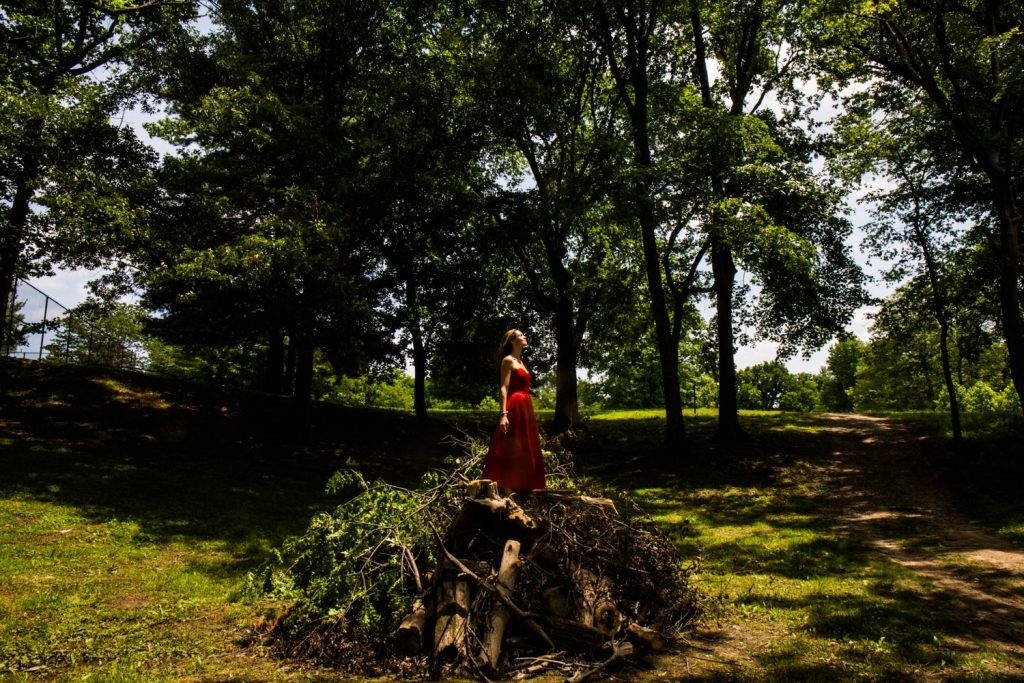
You’ve mentioned that Tempest’s Place Heirloom 1, Sunrises and Lakes is inspired by your grandmother, Vadis Pierce. How did she inspire the piece, and are any other works from Tempest inspired by women in your life?
I lived in my grandmother’s house for two years after I moved back from New York in 2014. It was also the first place I went to from the hospital after I was born in 1977. It still looks the same as it did when she moved there in 1968. Her house is where I know to go. To start a life. To celebrate. To mourn. To be together. My studio is still in her house. I go there almost every day to work.
My mother obviously plays an instrumental role in the Mother room. I created that series when I was pregnant with my second son. It was the first time I introduced my own rite of passage into the work. Merging my physical state with my landscape involved my mother in several ways. She manages and directs the landscape of my grandmother’s property through her love of trees. She collects fallen and washed-up limbs and unintentionally creates these magnificently turbulent and hive-like burn piles. So I partnered my womb with her burn piles to tell a story. The final work in the series, Pairs, incorporates charred sticks and breast milk.
I thought a lot about the ways generations of women are connected. The last work I made for the show, Siren Swing, has the sweat and tears from twenty-two ovulating women, many of whom are Nashvillians, sealed into the piece. So, to their delight or distaste, I asked a lot of friends to collect their waters for me. I was dropping off plastic vials and onions all over town.
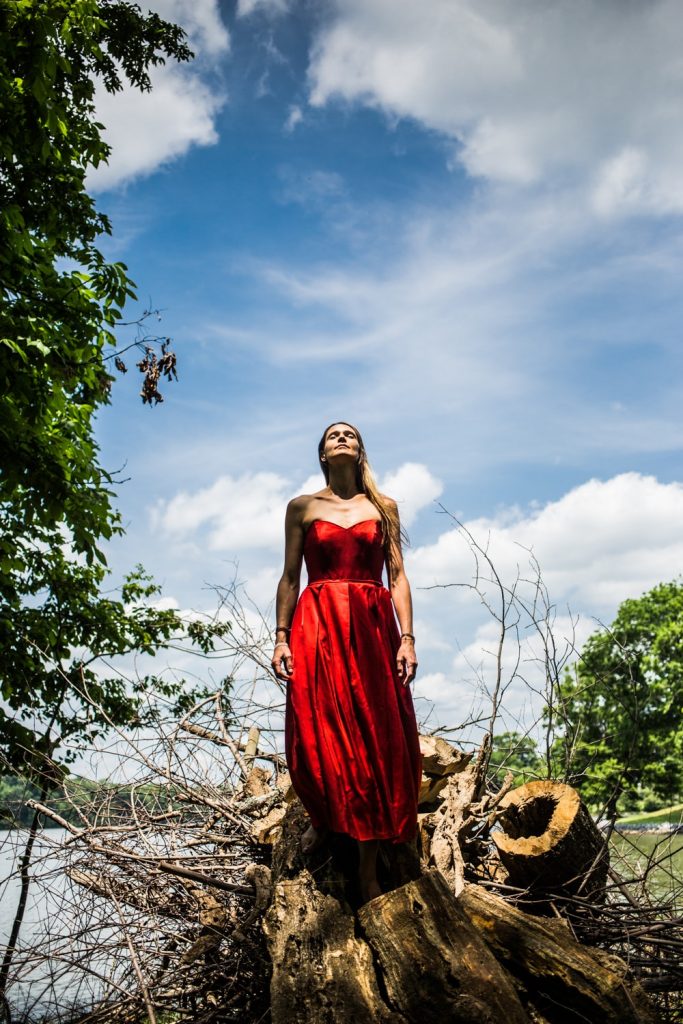
Tempest compares three phases of a woman’s life—the Wild Woman, the Mother, and the Elder—to phases of a storm. What inspired that metaphor?
I generate abstract compositions by partnering materials women use to adorn themselves or their spaces with different agitations. I like the idea of female characters influencing their environment so that the weather becomes a feminine force, creating a beautiful fury. A tempest is a disturbance, and I introduce a different disturbance to the characters in each chapter/room. The Wild Woman meets the storm, the Mother meets the burn pile, and the Elder meets silence.
What are you working on now? What’s inspiring you?
The greatest shift in my work, so far, was when I decided to make paintings from the feminist materials I had been creating sculpture and installations with. The challenge was to transform ribbon and collections of bedding into brush marks and stains. After re-engaging with the wall and making paintings for the past seven years, the last two works I made for the show, Siren Swing and Inverted Bouquet Heirloom, are sculptures. Inverted Bouquet Heirloom resulted from my frustration with a red piece intended for the wall. I cut out layers and wadded them up in the corner of my studio. When I could look at it again, I realized it was meant to leave the wall and live on the floor. So I am starting again from there.
Tempest is now showing through September 10 at the Frist’s Gordon Contemporary Artists Project Gallery.
Suggested Content
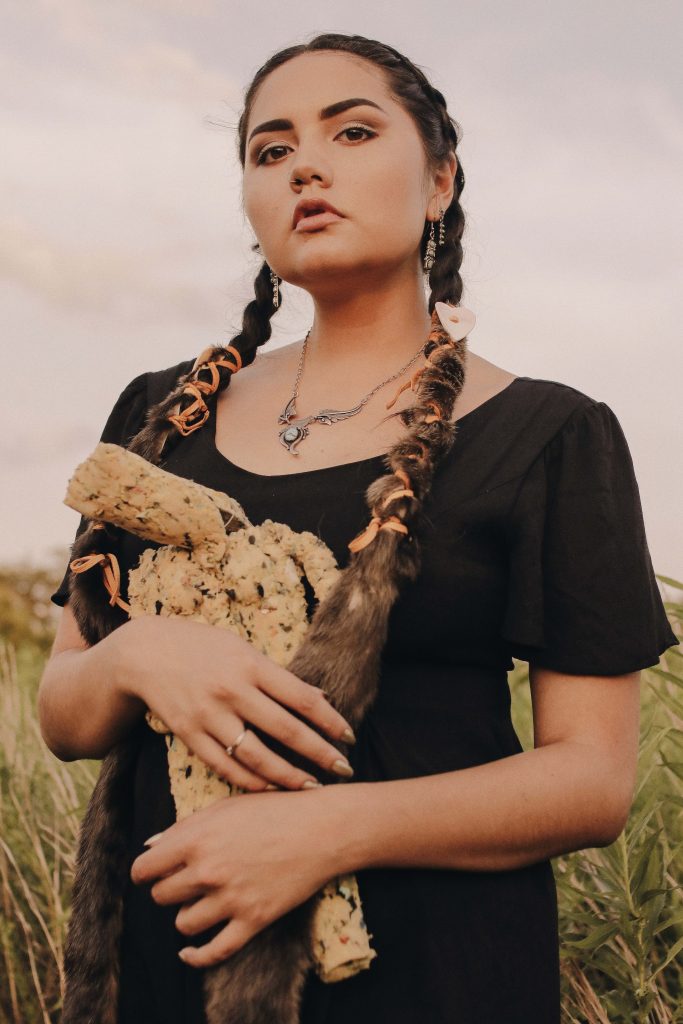
Chelsea Kaiah James
Why aren't there any ears sculpted onto the presidents of Mt. Rushmore? Because American doesn't know how to listen. - Unkown
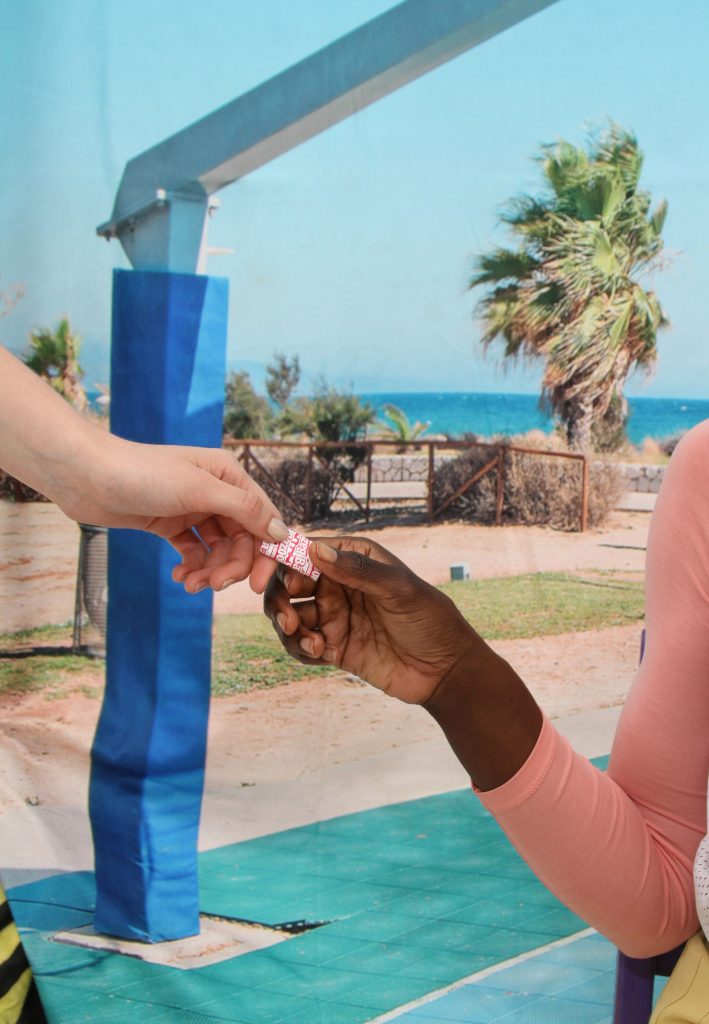
Contributor Spotlight: Dylan Reyes
When I create, I often think of what Johannes Itten said, “He who wishes to become a master of color must see, feel, and experience each individual color in its endless combinations with all other colors.”. I’m also inspired frequently by love and loneliness and want folks consuming my work to be encouraged to start paying attention to the little details in everyday life, appreciate the simple things, and let them eventually inspire you! Ultimately, I’m just trying to become a mother fuckin master of color.
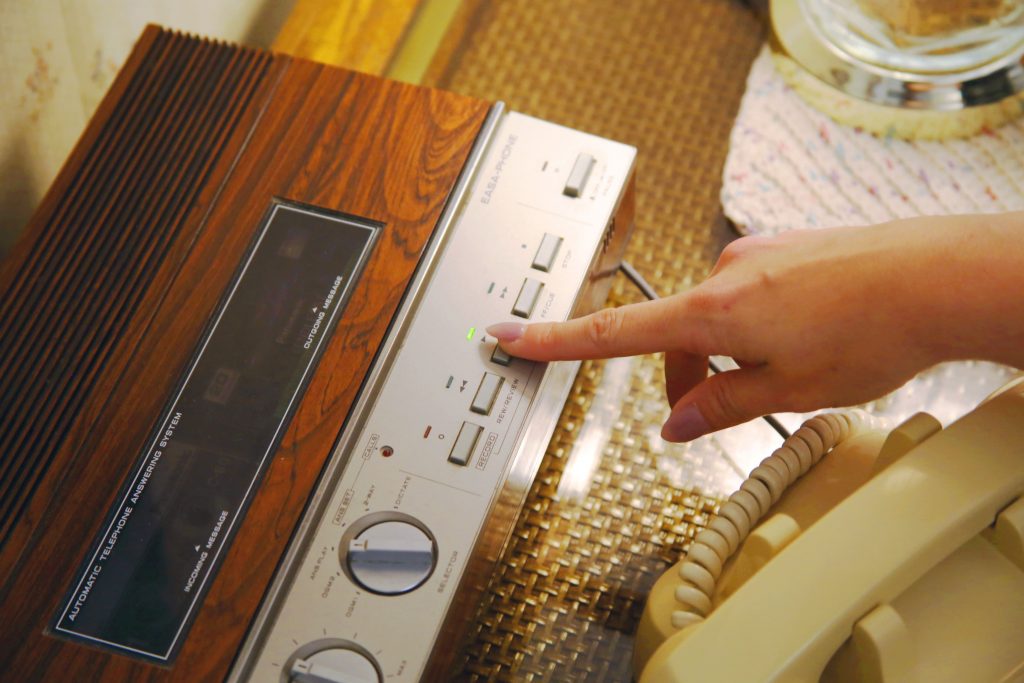
Secondhand Sorcery
A look inside the beautifully cheesy world of Crappy Magic
